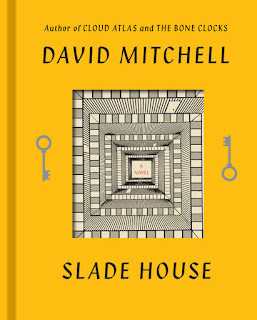 |
| Dean, with his book, and friends. |
Math has always been mysterious - at least in my world. Solutions and logic play hide and seek with me. So, when I heard that one of our students wrote a book about math, my ears went on full alert. Wow, right?
Here's Dean's story:
When I was younger, and just beginning to be enthralled by
mathematics, I read a quotation attributed to Einstein which has fascinated me
ever since, “Things should be made as simple as possible, but not
simpler.” With this maxim, Einstein described perfectly the power of
mathematical problem-solving – the ability to distill very complex
scientific questions into simple problems with even simpler solutions, and to
balance beautiful mathematical problems between recalcitrance and
resolution, depending on the ingenuity of the problem solver.
I began reading
math books in 4th or 5th grade, and became
instantly enamored of the subject for both its elegance and harmony, as
well as the rigor of problem-solving. My driving force was the
distinctive “Aha!” feeling when I could see the critical insight that
could make a complex problem comprehensible and solvable. Even more
motivating than the glory of solving a problem, however, was the failure to do
so. I found myself enjoying the words “How could I miss that!?” more
than the word “Aha!”
So thrilling were
these feelings to me that I started to collect
and even develop problems where clever intuition was key.
Whenever a friend asked me why I enjoyed math as much as I do, I
would use one of these problems to demonstrate the grace that I found in
turning something that seems so complicated into something simple through just
one or two critical insights. I could even sometimes see that I was able
to excite a friend by the concept or an example, where they had previously
claimed to lack either proficiency in, or appreciation for,
mathematics. For all the thrill that came from working problems myself,
even more exciting was being able to spread that enthusiasm for mathematics to
my friends, and early in high school, I wrote a book titled Wearing
Gauss’s Jersey to that exact end – to introduce those
who claimed to be non-mathematicians to the ideas of problem-solving through
mathematical insights, the sorts of insights for which “rockstars”
such as Carl Friedrich Gauss was so famous. Although there were many
wonderful problem-solving books, I had yet to encounter a book devoted to just
this topic.
Needless to say,
the adage that a writer learns more than he teaches turned out to be true
for me. The journey of writing a book – of taking an idea from
origin to fruition, of convincing a leading publisher that the idea had
enough merit to justify taking a chance on a high school kid, and of then
actually vindicating that publisher’s trust with a coherent work – has
certainly been the most amazing of my young life. I came to realize that
such a project required not only paying attention to coherence of content, but
to aesthetics of style – having something worthwhile to say, and then writing
it in such a way that it is worth someone else’s while to read. The whole
of this process was not just different in degree, but essentially different in
kind, from any challenge I had yet undertaken. Moreover, I came to
appreciate just how much tenacity was needed to see that challenge
through. Several times, I had to resist the urge to quit in the middle of
the demanding process of writing, revising, and then writing again. Each of
those times, however, those feelings were overwhelmed by reminders as to why I
was writing the book in the first place. For example, in the process of
developing and solving some problems for the book, I found a hidden
relationship between two problems in discrete mathematics that seemed entirely
separate. That discovery led to an entirely new approach to another
old problem, that of summing the squares. It was moments like these
– moments in which I realized that writing served only to deepen my
appreciation for what I was writing about – that allowed me to see the
challenge through, and to refute the justification that I had already
passed the point of diminishing returns on the expended effort. In short,
I came to understand Hemingway’s blithe wisdom when he expressed how
much of a person goes into their writing, “There is nothing to writing.
All you do is sit down at a typewriter, and bleed.” That, perhaps,
is the most profound insight of all.
-Dean Hathout; class of 2016.
Readers: Dean's book, Wearing Gauss’s Jersey is on display in the author's section, downstairs in the Chandramohan Library.






